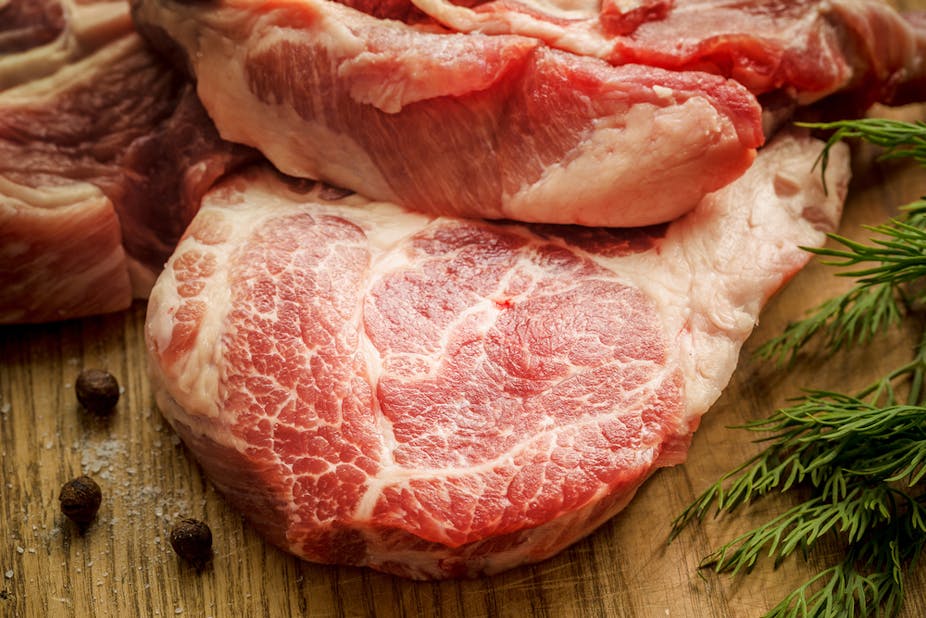Understanding the composition of food and its chemical content is the first step to managing your diet well. It is particularly important to know the composition of meat, since the fat content of meat has changed over time.
Our research shows that:
different species have different fat content;
-
that this has changed over the last 40-plus years; and
that the fat content of red meat is lower in South Africa than in the US and Australia.
Less fat to go around
Fat is an essential component of our bodies. It insulates the body from cold and helps our bodies absorb and transport fat soluble vitamins. It is also a rich source of energy and important for hormone production.
Every gram of fat in our bodies provides us with 37 kilojoules of energy. Other energy providing nutrients such as carbohydrates or proteins only produce 17 kilojoules of energy for each gram.
Although all meat contains fat, the fat content of South African red meat has decreased dramatically over time. Data on the physical composition of South African beef shows this. Today’s meat has higher muscle content and less fat content.
In 1972 beef contained about 22.8% of fat, 63.5% of muscle and 13.9% of bone. By 2010 this dropped had to 18.6% fat, 64.8% muscle and 16.9% bone. Figures from 2014 show that there is now only 11% fat in a piece of beef with 72% muscle and 17.3% bone.
This decline in fat content means that South African beef can now be classified as lean. This is reflected in the latest draft regulations on the labelling and advertising of foods, which states that meat with a fat percentage of between 5% and 10% can be classified as “lean”.
The reduction in fat has been driven by a number of factors. These include farmers choosing lean breeds and meat being trimmed at retail outlets and then again at home before it is cooked.

The study also compared data from the US and Australia and found that South African lamb and mutton leg cuts contain notably less fat.
But not all fat is bad. Meat also contains “good fats”. Nearly half of the fat in South African red meat consists of healthy mono- and polyunsaturated fatty acids. Diets high in monounsaturated fatty acids from olive oil, fish and certain meats like lamb offer protection from coronary heart disease and certain types of cancers.
Lamb and mutton are also natural sources of conjugated linoleic acid. A high intake has been linked to reductions in heart disease, cancer and cholesterol levels.
Knowing what you eat
Red meat, trimmed or not, compares favourably with other animal source foods such as chicken and pork. The data shows that a roasted lamb loin chop trimmed of fat contains 7.8% fat while a roasted chicken drumstick without the skin contains 9.8% fat. A slice of roast leg of lamb, untrimmed, contains 11.7% fat, while an untrimmed grilled pork loin contains 13.9%.
Whether you are on the banting bandwagon which recommends a low carb high fat diet, or steering clear of any fat, in the era of “you are what you eat”, knowing what is in your food gives you the power to make informed food choices.

